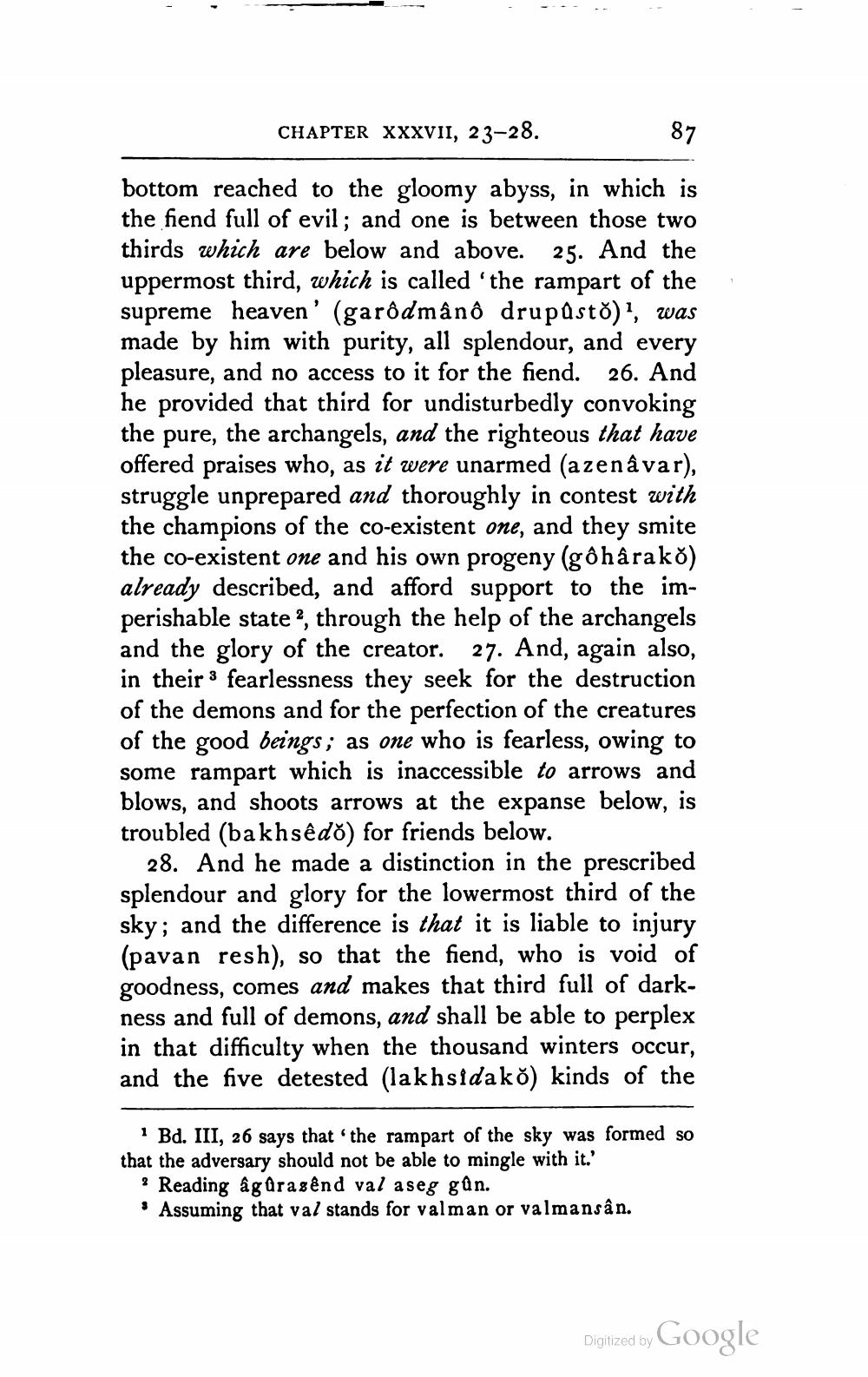________________
CHAPTER XXXVII, 23–28.
- 87
bottom reached to the gloomy abyss, in which is the fiend full of evil; and one is between those two thirds which are below and above. 25. And the uppermost third, which is called 'the rampart of the supreme heaven' (garôdmânô drupasto), was made by him with purity, all splendour, and every pleasure, and no access to it for the fiend. 26. And he provided that third for undisturbedly convoking the pure, the archangels, and the righteous that have offered praises who, as it were unarmed (azenâvar), struggle unprepared and thoroughly in contest with the champions of the co-existent one, and they smite the co-existent one and his own progeny (gô hârako) already described, and afford support to the imperishable state 2, through the help of the archangels and the glory of the creator. 27. And, again also, in their 3 fearlessness they seek for the destruction of the demons and for the perfection of the creatures of the good beings; as one who is fearless, owing to some rampart which is inaccessible to arrows and blows, and shoots arrows at the expanse below, is troubled (bakhsêdo) for friends below.
28. And he made a distinction in the prescribed splendour and glory for the lowermost third of the sky; and the difference is that it is liable to injury (pavan resh), so that the fiend, who is void of goodness, comes and makes that third full of darkness and full of demons, and shall be able to perplex in that difficulty when the thousand winters occur, and the five detested (lakhsidako) kinds of the
1 Bd. III, 26 says that the rampart of the sky was formed so that the adversary should not be able to mingle with it.'
? Reading agūrasênd val aseg gûn. • Assuming that val stands for valman or valmansân.
Digized by Google




